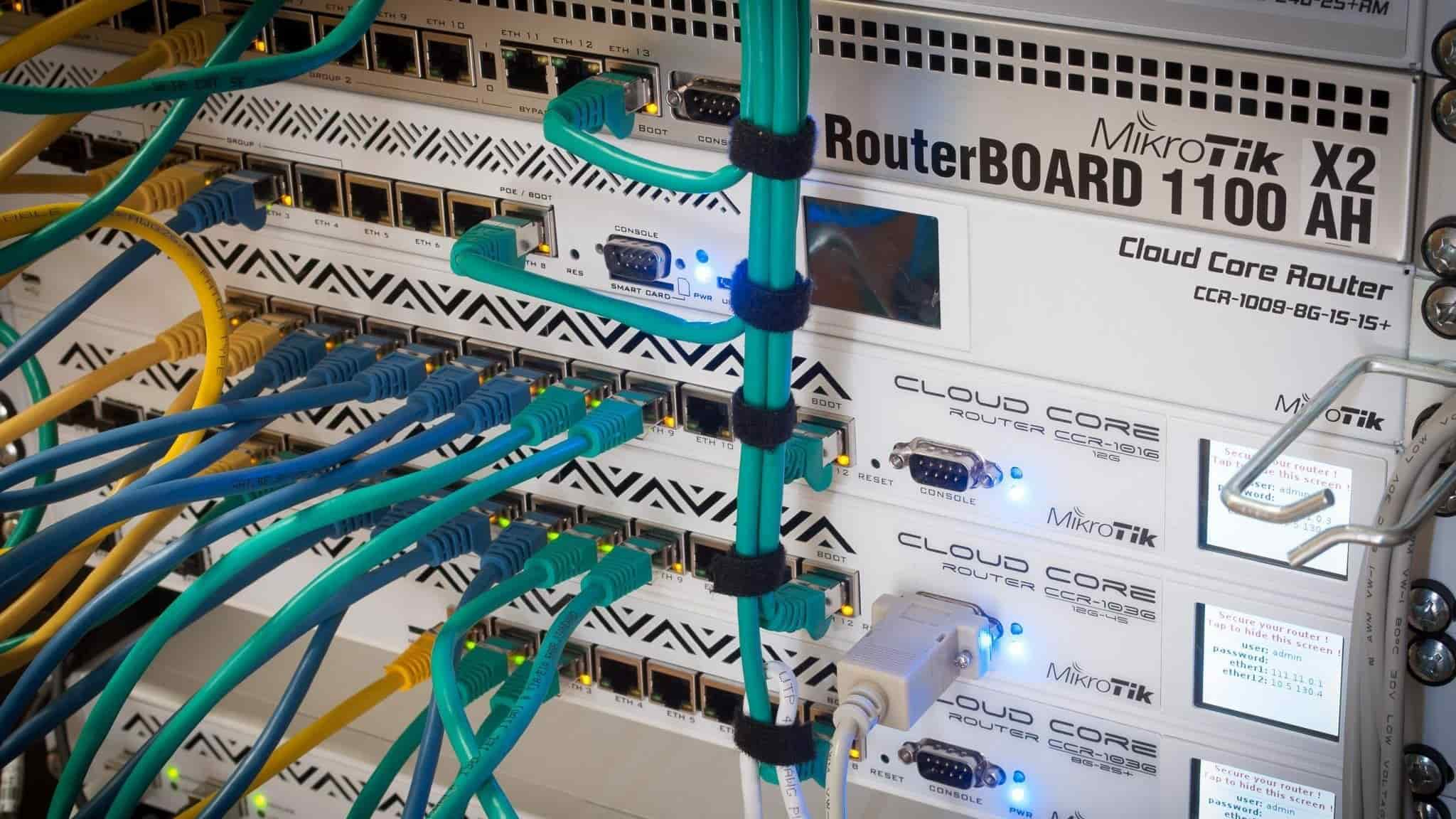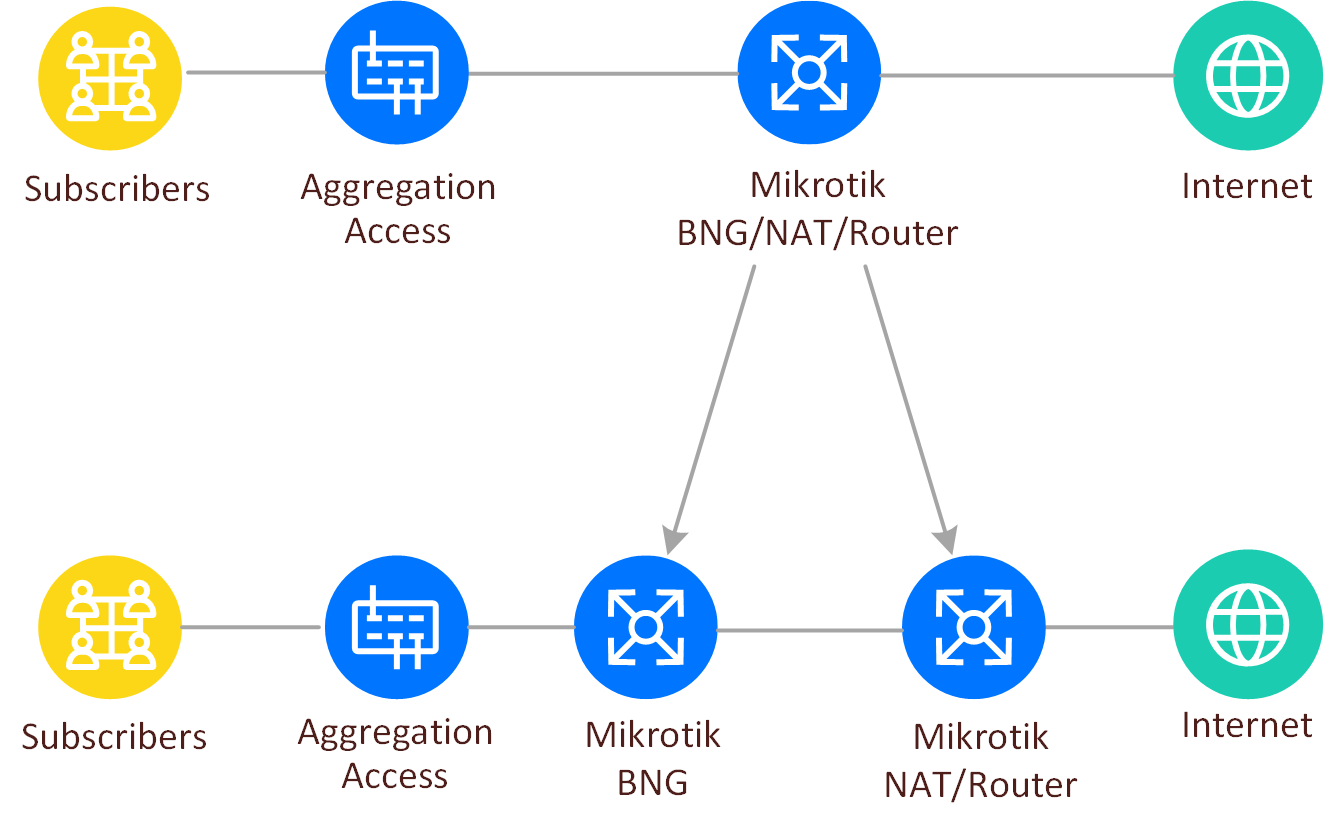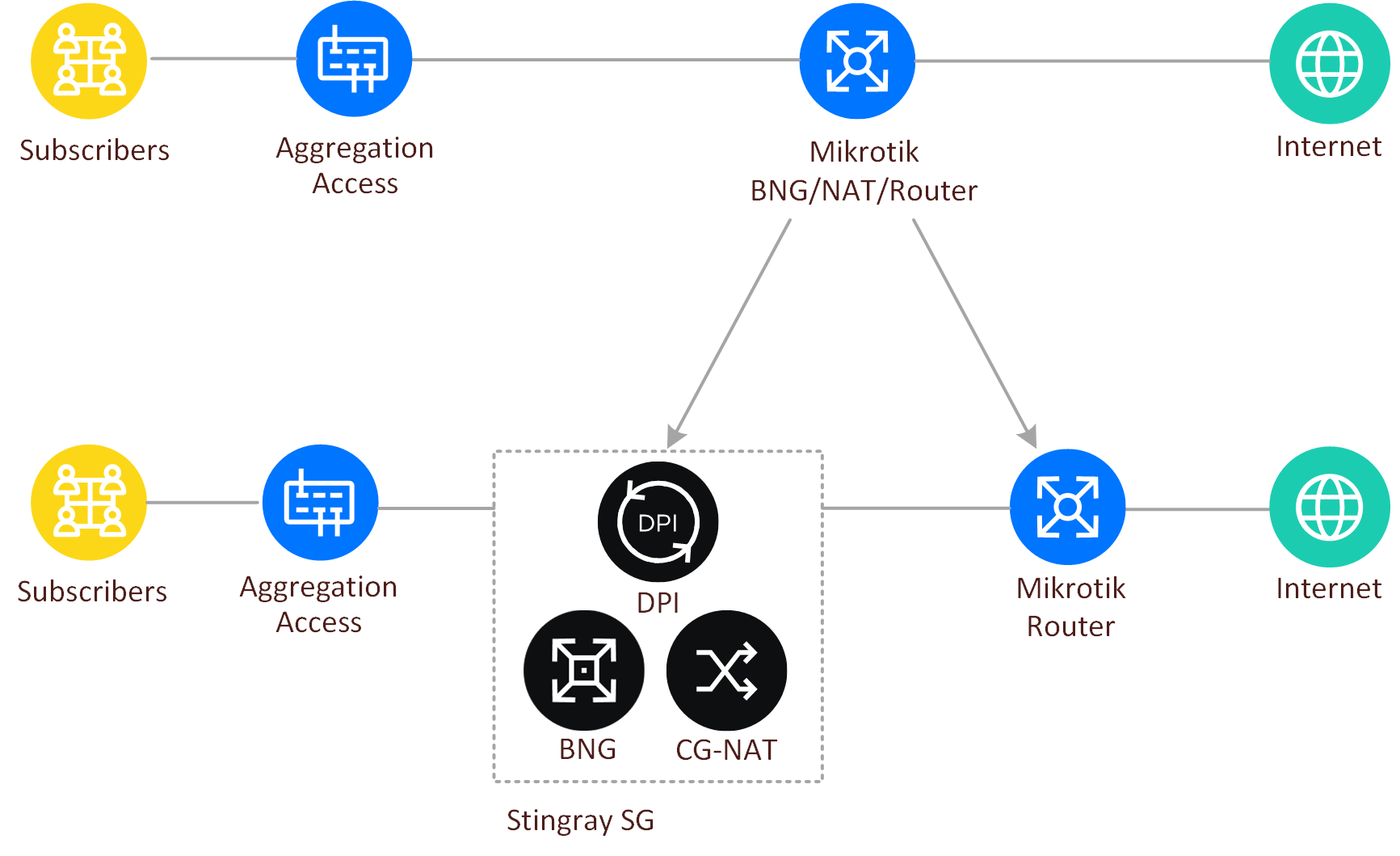
There are several reasons for this: the brand is widely known in the telecom community, price that could fit in a small budget, and its out-of-box solution which functionality is sufficient to get the work started.
What are the pros and cons of MikroTik?
MikroTik is a Latvian based developer of routers and wireless systems for ISPs. The company provides hardware and software solutions globally and has a wide knowledge about network administration.
The obvious advantages of the MikroTik are affordability, compactness, and energy-efficiency. However, MikroTik devices work great with routing, but at the same time operators notice performance degradation when traffic grows and additional services are used. In this case, the capacity of the existing equipment becomes insufficient, and included in the specifications parameters are not maintained.
Example of switching from MikroTik to software BRAS
This exact case happened to one of the service providers from Lebanon — WIN DSL, who offers internet and IPTV/OTT services in Beirut for more than 4000 end users now. When building the network infrastructure, like most providers in this situation, the company chose MikroTik devices.
The ISP started its work and eventually, with the growth of recognition in the market and the increase in the number of customers to 1000 users per device, ISP realized that the capacity of its current equipment is not enough. Subscribers started experiencing problems with Internet access due to insufficient performance: speed slowed down and latency increased.
The problem was solved by doubling the amount of equipment. Operator bought a second CCR 1072 and carried the PPPoE BRAS/BNG functions to one MikroTik, and NAT + Routing to another one. But it has become apparent that this approach is not suitable for serving a small number of subscribers.

In addition, in modern realities, a simple fight against the degradation of the service is not enough — as the growth of competition contributes to the constant improvement of the quality of the services provided.
WIN DSL chose Stingray Service Gateway (SSG) from VAS Experts as BRAS/BNG + NAT for managing its FTTH network. The SSG differs from other similar solutions in that QoS is used for smart subscriber traffic policing. QoS can be applied to the entire channel for Uplink optimization, as well as to the data plan that is provided to end users.
DPI based QoS solution from VAS Experts allows achieving a high output and classifying all traffic by priorities, providing wider bandwidth to certain applications and protocols. So, if there is a subscriber downloading p2p with a plan of 10Mb/s and multiple internet users at home, they are not affecting each other during the Zoom calls or VoIP or online Gaming (or other protocol that has priority).
After successful tests, the ISP has chosen easily scalable vBNG solution from VAS Experts’ for its network management, and decided to use MikroTik device only as a border router.

The Stingray Service Gateway is a super stable solution. We are using it on our backbone as PPPoE BRAS access gateway for our FTTH users.
We offer optimal speed capacity to the end users – 10 Mbps, and we are able to achieve QoS on the end users level, which saves more than 15% on our total bandwidth usage. By using DPI technology to prioritize traffic, our services as an ISP stand out at its best from the others in Beirut. Also, we’re very satisfied with the quality of the VAS Experts’ technical support.
– Nadim Houeiss, CTO at WIN DSL
How much can vBNG solution license cost?
Virtual BNG/BRAS installs on x86 servers. Most often, an ISP already has such equipment or virtualization is used. For example, VAS Experts – a software developer for the telecom market, offers a flexible price on BNG/BRAS license, which depends on the amount of total traffic that ISP has on its network.
The calculation of price can look like that:
- 1 subscriber generates 2.5 Mbps of traffic during peak hours.
- On that basis, we can say that 1000 subscribers generate 2.5 Gbps in and 0.5Gbps out traffic = total 3 Gbps.
- License for 3 Gbps of total traffic for vBNG solution costs 3000$.
An obvious advantage of the virtual BNG solution is that it could be installed on any server. This allows to have a low entry threshold for operators even with a limited budget. But at the same time, software BRAS/BNG provides fault-tolerance and subscriber service without any lags.
It also ensures continuity of the solution – all the services that were offered on the MikroTik will be offered on the vBNG solution, plus additional features like CG-NAT and QoS.